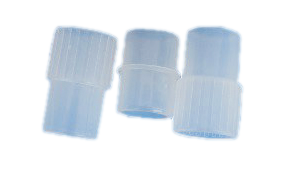
Connector Joint Ref. No.:NMR103409
Connector joints are a necessary part of any circuit build, but many people don't fully understand them or why they are necessary. In this article, we will be taking an in-depth look at connector joints and what they do. We will discuss their various types and features, as well as their advantages and disadvantages.
There are several types of connector joints that can be used to join two pieces of material together. The most common type of connector joint is the butt joint, which is simply two pieces of material that are joined together at their ends. Another common type of connector joint is the miter joint, which is a corner joint that is often used to join two pieces of molding or trim. A third type of connector joint is the lap joint, which is a connection between two pieces of material that overlap each other.
Connector joints are a type of mechanical joint used to connect two or more components. They are commonly used in machinery and equipment, as well as in structures such as bridges and buildings. Connector joints can be classified into two main categories: non-permanent and permanent. Non-permanent connector joints are designed to be disconnected and reconnected repeatedly. They are typically used for components that need to be disassembled frequently, such as those in machinery that requires maintenance or repair. Non-permanent connector joints can be further classified into two subcategories: detachable and reusable. Detachable connector joints can only be connected and disconnected once, while reusable connector joints can be used multiple times. Permanent connector joints, on the other hand, are designed to remain connected permanently. They are typically used for load-bearing applications, such as in bridges and buildings. Permanent connector joints can also be further classified into two subcategories: welded and bolted. Welded connector joints are joined together by welding, while bolted connector joints are joined together by bolts.
There are many types of connector joints, each with their own advantages and disadvantages. Some of the most common are:
Lap joints: A lap joint is created when two pieces of material are overlapped and fastened together. This type of joint is often used in metalworking, as it allows for a strong connection between two pieces while still allowing them to move relative to each other.
Butt joints: A butt joint is created when two pieces of material are butted up against each other and fastened together. This type of joint is often used in woodworking, as it allows for a tight connection between two pieces while still allowing some movement.
T-joints: A T-joint is created when one piece of material intersects another at a 90-degree angle. This type of joint is often used in plumbing, as it allows for a strong connection between two pipes while still allowing them to move relative to each other.
Cross Lap Joint: A cross lap joint is created when two pieces of material intersect at a non-90 degree angle. This type of joint is often used in carpentry, as it allows for a strong connection between two boards while still allowing them to move relative to each other.
Dado Joint: A dado joint is created when one piece of material fits into a groove cut into another piece of material. This type of joint is often used in woodworking, as it allows for a tight connection between two boards while still allowing some movement.
When it comes to choosing the right connector joint for your application, there are a few things to consider. First, you need to determine the type of joint you need. There are three main types of joints: butt joints, lap joints, and miter joints. Each has its own advantages and disadvantages, so make sure to choose the one that best suits your needs. Once you've determined the type of joint you need, the next step is to select the right size. Connector joints come in a variety of sizes, so it's important to choose one that will fit your application correctly. If you're unsure about what size to choose, it's always best to consult with a professional before making your final decision. Finally, you need to take into account the material of the connector joint. Connector joints are typically made from either metal or plastic. Metal connectors are usually stronger and more durable than their plastic counterparts, but they can also be more expensive. Plastic connectors are typically less expensive than metal ones, but they're not as strong or durable. again, it's important to choose the material that best suits your needs and budget.